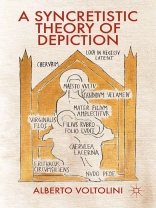What is depiction? A new answer is given to this venerable question by providing a syncretistic theory of depiction that tries to combine the merits of the previous theories on the matter while dropping their defects. Thus, not only perceptual, but also both conventional and causal factors contribute in making something a picture of something else.
Inhaltsverzeichnis
PART I: WHAT IS ALIVE AND WHAT IS DEAD IN PREVIOUS THEORIES OF DEPICTION Depictions Aka Pictures, i.e, Pictorial Representations 1. Depictions, Or Pictures 2. The Syncretistic Approach Semiotic Theories Of Depiction 1. Goodman’s Theory 2. Kulvicki’s Theory Resemblance Theories Of Depiction 1. Objective Resemblance Theories: The Simple And Fancy Versions 2. Objective Resemblance Theories: The Sophisticated And Real Versions 3. Subjective Resemblance Theories: The ‚Double Experience‘- Versions 4. Subjective Resemblance Theories: The ‚Experience Of Similarity‘- Versions Seeing-In, Seeing-As, Recognition And Make-Believe Theories Of Depiction 1. Wollheim’s Theory Of Seeing-In 2. Gombrich’s Theory Of Seeing-As 3. Seeing-In Includes Seeing-As 4. Is Seeing-In Necessary For Figurativity?(I) 5. The Recognitional Theory 6. Is Seeing-In Necessary For Figurativity?(II) 7. Where Are We Now? More On Seeing-In 1. The Nature Of Seeing-In 2. The Content Of The Recognitional Fold Is The Picture’s Figurative Content 3. The Content Of Seeing-In 4. The Mode Of Seeing-In PART II: THE SYNCRETISTIC THEORY The Syncretistic Theory: A General Survey 1. Grouping Properties 2. The Emergence Of The Known Illusion 3. The Conceptual Character Of The Recognitional Fold 4. Objective Resemblance Comes Back From The Rear Door 5. The Core Of The Syncretistic Theory Applications, Consequences And Integrations Of The Theory 1. Depiction And Sculptures 2. Actual Or Counterfactual Resemblance 3. Pictures In Other Sensory Modalities Defending The Syncretistic Theory 1. Is The Syncretistic Theory Correct? 2. The Adequacy Conditions 3. Impossible Pictures? Bibliography ?Über den Autor
Alberto Voltolini (Ph D Scuola Normale Superiore, Pisa, 1989) is Professor on the Philosophy of the Mind at the University of Turin (Italy) and is a philosopher of language and mind whose works have focused mainly on fiction, intentionality, depiction and Wittgenstein. He has previously held scholarships at the Universities of Geneva (Switzerland) and Sussex (UK) and has been visiting professor at the Universities of California, Riverside, USA, Auckland in New Zealand and the Australian National University, Canberra and Barcelona in Spain. He has also been a member of the Steering Committee of the European Society for Analytic Philosophy (2002-08) and of the Board of the European Society for Philosophy and Psychology (2009-12). His publications include How Ficta Follow Fiction (2006) as well as the‚Fiction‘ entry (with F. Kroon) in the
Stanford Encyclopedia of Philosophy.
Sprache Englisch ● Format PDF ● Seiten 269 ● ISBN 9781137263292 ● Dateigröße 4.1 MB ● Alter 02-99 Jahre ● Verlag Palgrave Macmillan UK ● Ort London ● Land GB ● Erscheinungsjahr 2015 ● herunterladbar 24 Monate ● Währung EUR ● ID 5062013 ● Kopierschutz Soziales DRM












